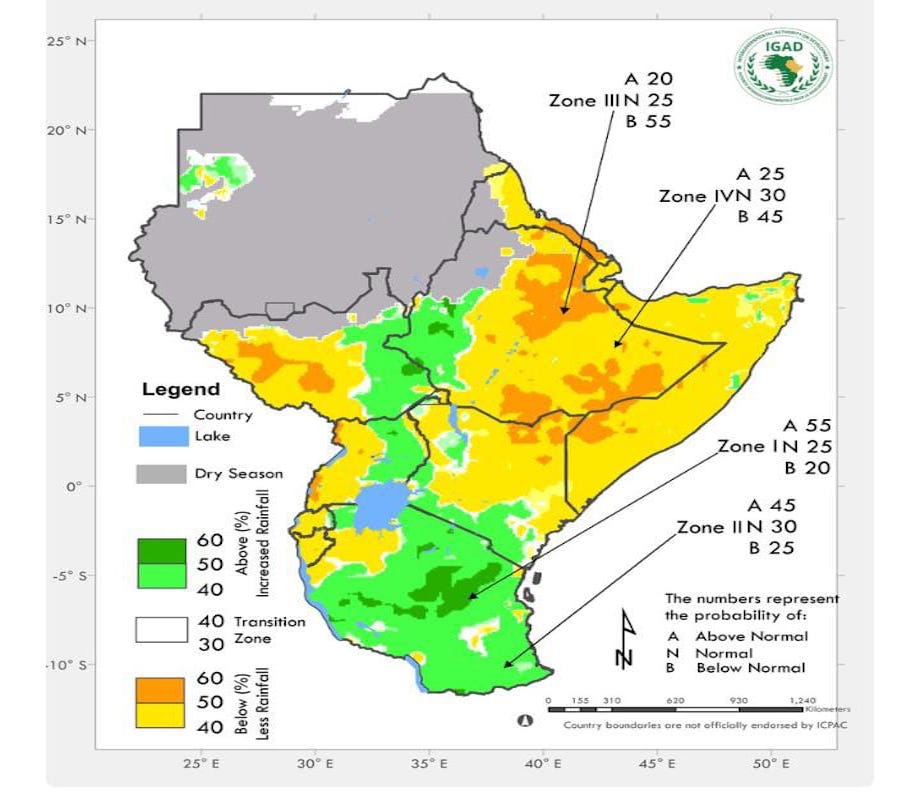
NAIROBI, Jan 22 (NNN-KBC) — The IGAD Climate Prediction and Applications Centre (ICPAC) has forecast for below-average rainfall in a large portion of the Greater Horn of Africa (GHA) region during the long rains season of March, April to May.
The specialised institution of IGAD says that much of Somalia, eastern and northern Kenya, southern and north-eastern Ethiopia, Djibouti, coastal Eritrea, western South Sudan, southern and western Uganda, Rwanda, Burundi, and north-western Tanzania are likely to experience below average rainfall.
The forecast released at the 69th Climate Outlook Forum further indicates that, “there is a likelihood of below normal conditions for the cross-border areas of Ethiopia-Kenya-Somalia, north-eastern Ethiopia, southern Eritrea, and parts of south-western South Sudan.”
The climate scientists note that, the season which “is critical for the equatorial part of the Greater Horn of Africa region and contributes up to 60% of the annual rainfall in many parts, could also see wetter-than-normal conditions over most parts of Tanzania, eastern Uganda, eastern South Sudan, and western Ethiopia.”
The statement indicates that, there is a high chance of over 70% that “the seasonal rainfall will exceed 200millimeters in south-western Ethiopia, western Kenya, Uganda, Rwanda, Burundi, and Tanzania.”
The temperature forecast, according to the climate scientists drawn from the region and working with global climate centers, indicates a higher likelihood of warmer-than-normal conditions across most parts of the Greater Horn of Africa, with the highest probabilities that is more than 75%, over Sudan, Ethiopia, Eritrea, Djibouti, northern Somalia, and northern Kenya.
An early to normal onset is expected in most parts of the region, except for localised areas in central Kenya, southern Ethiopia, and central Somalia, where a delayed start to the season that begins in March and lasts through to May, is likely.
“The predicted climatic conditions for the MAM 2025 season are likely to have gender-differentiated impacts on the affected populations, with more adverse effects expected to be pronounced among women, children, older persons, and persons with disabilities,” says that statement in part. IGAD is urging all stakeholders to take proactive steps to reduce the impacts on the most vulnerable populations.
The World Meteorological Organisation (WMO) and major global producing centres have indicated that the El Nino Southern Oscillation (ENSO) remains neutral through the long rains season of March to May period. At the same time the Indian Ocean Dipole (IOD) is currently in the neutral phase and is expected to remain neutral throughout the MAM season. — NNN-KBC




